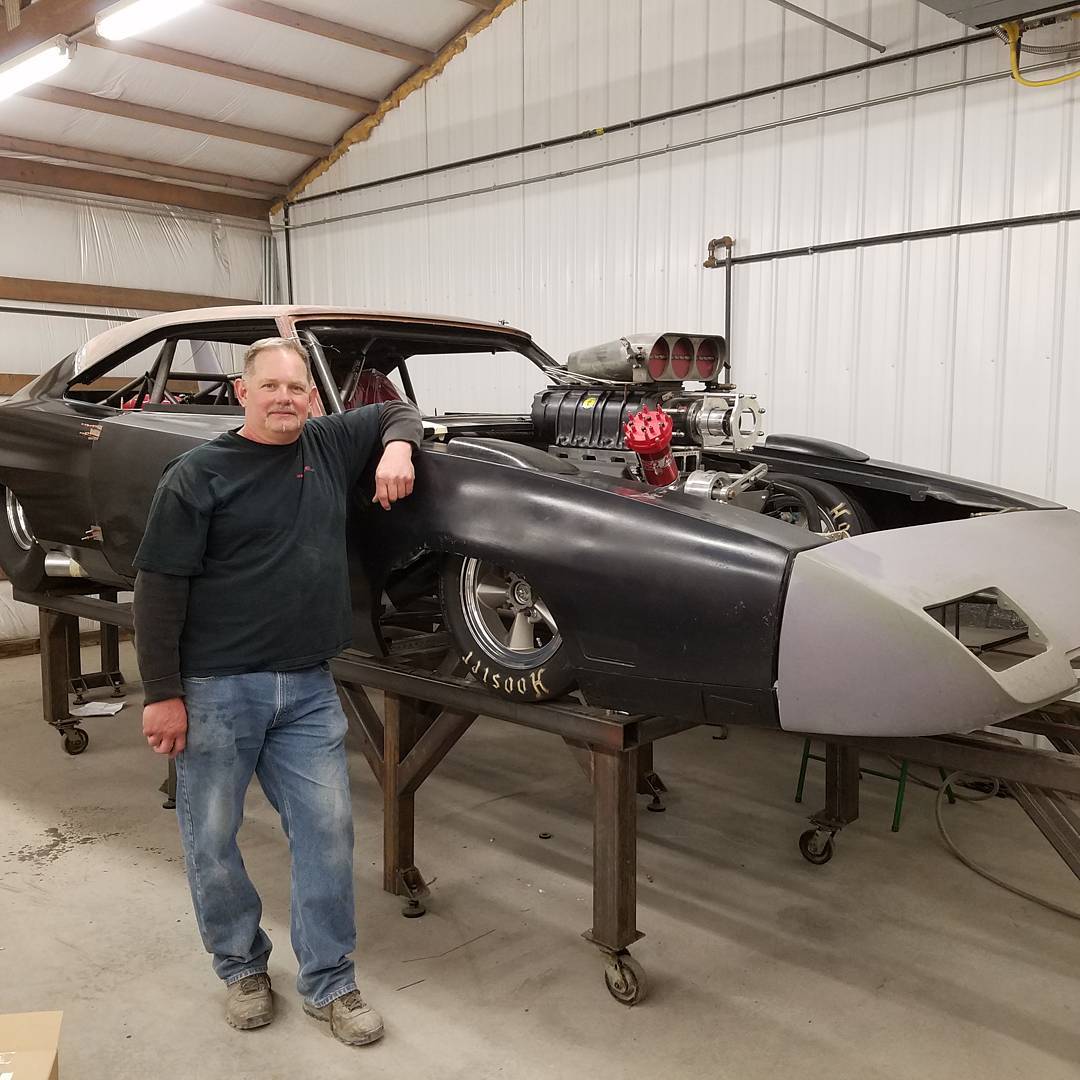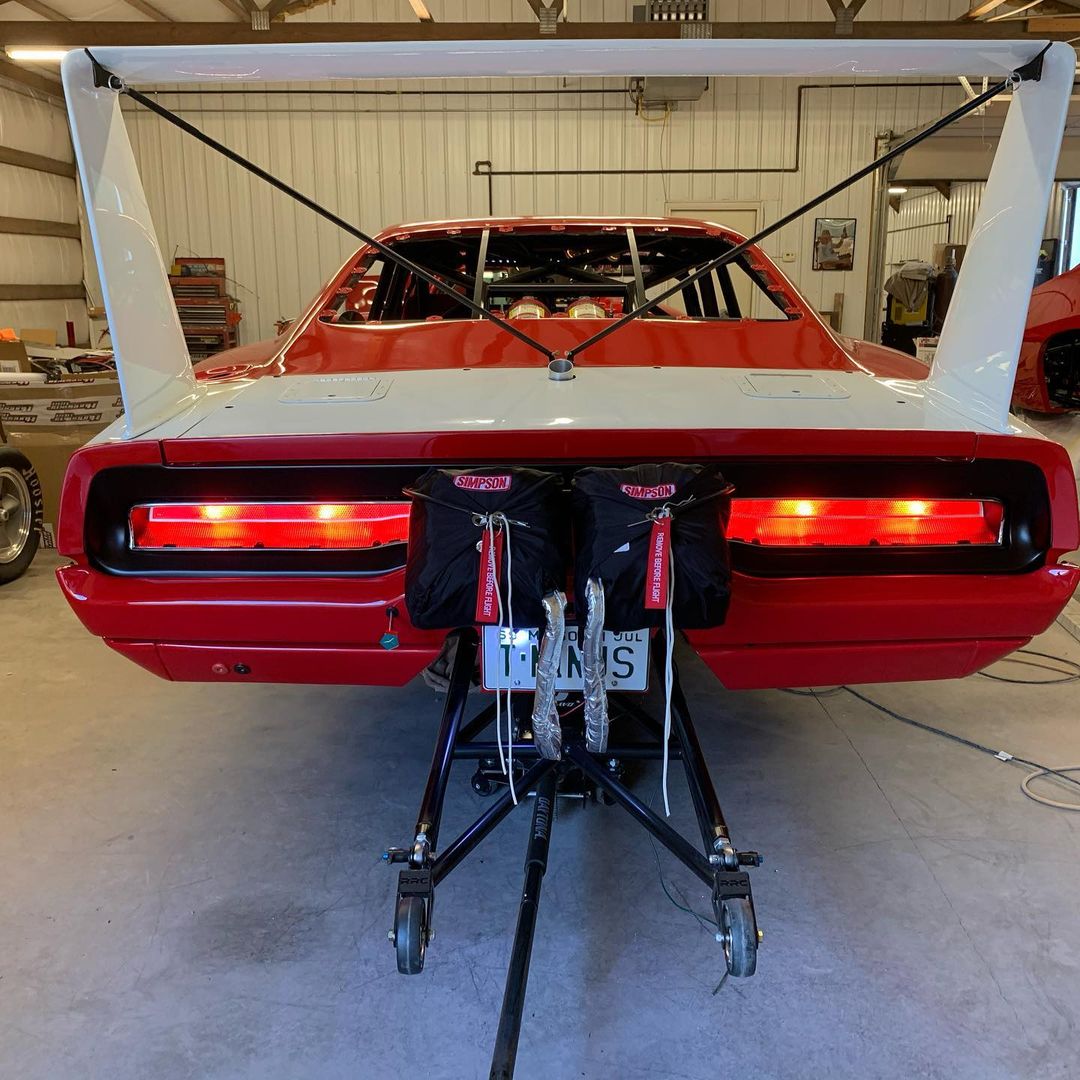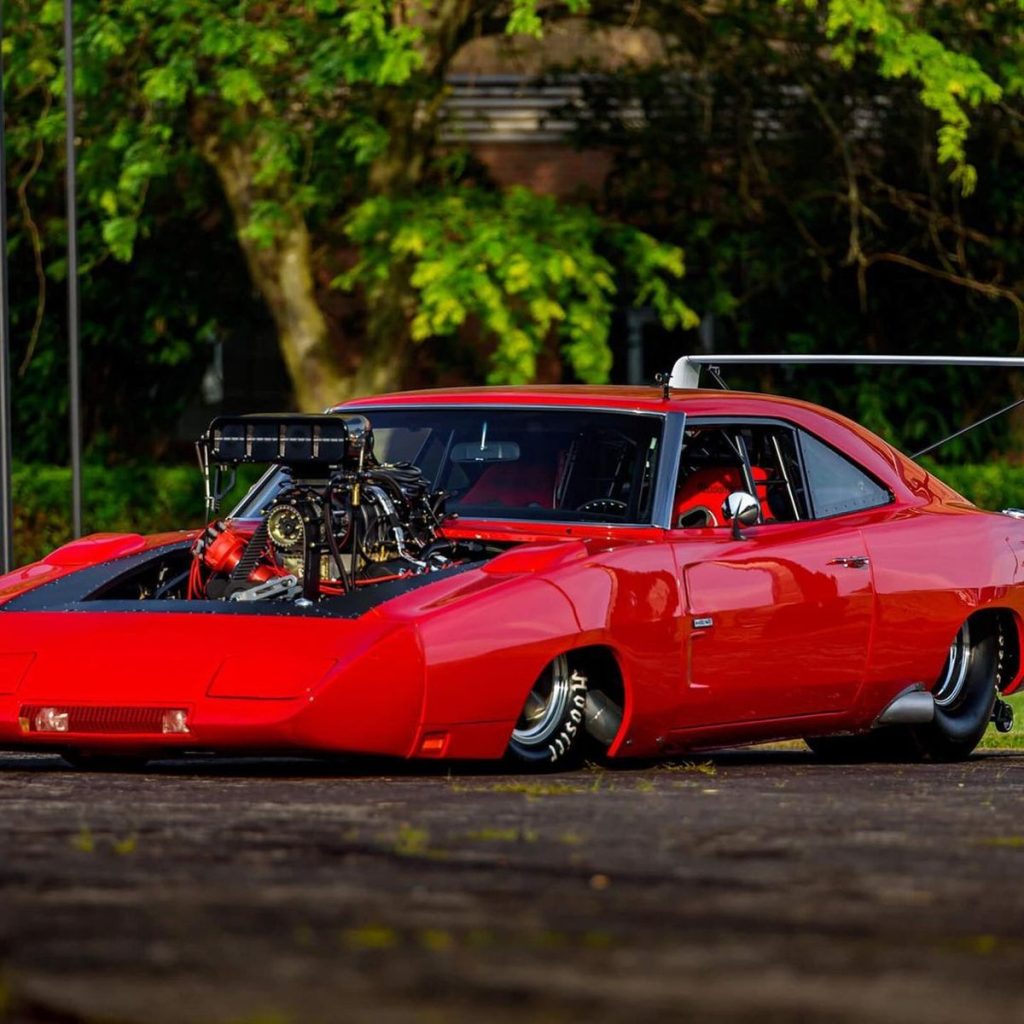Back in 1969, Chrysler built the Dodge Charger Daytona (and its Plymouth Superbird sibling) for NASCAR glory, with this being the first to hit 200 mph on a closed course. Two decades later, a Missouri-based hot rodder named Wally Elder built a Daytona street car clone into a Pro Street monster that grabbed the covers of multiple magazines before reaching a new owner. More recently, Wally tried to bring the Dodge back into his garage, but he was refused, so, naturally, the enthusiast built an even fiercer example, the one you’re currently gazing at.
Unlike the original NASCAR contraption, Wally’s new Daytona, which he completed earlier this year, is more about acceleration than top speed, while also keeping its number plates by maintaining elements such as lights and windscreen wipers.
While the street version of the original aero cars never received the appreciation of their motorsport counterparts—many customers couldn’t cope with the extreme looks of the nose cone and the massive wang—Daytonas and Superbirds are naturally collector cars these days, easily going for six-sigure sums.
There’s no need to fret, though, as no actual Daytona was hurt in the making of this machine—quite the opposite.
You see, while, as the builder explains in an Instagram post, his 90s project is “sitting in a garage in Arizona”, he used his Custom Auto Works shop to put together this new one starting with the roof and A-pillars from a Daytona that had been ruined.
So the next time you see one of those social media posts asking if a rusty classic is too far gone, remember that people like Wally still exist!
As for the rest of the body, which is the part the aficionado used to kick off the build, this involves Auto Metal Direct sheet metal, fiberglass goodies from Glasstek and, of course, reproduction pieces, which were supplied by Janak.
And, to achieve that almost-ground-level nose, which, by the way, is not that different to what the NASCAR racers had, the man had to cut the fiberglass front fenders and adjust the body line up to the door.
Since we’re talking about a Pro Street machine, we’re looking at massive rear wheel tubs that allow meaty rubber to be installed. As such, while the front end sits about one inch (2.5cm) off the ground, with the car featuring skinny 15×4-inch wheels—Wally explains the ride height might be increased for greater drivability—the rear features 15×14-inch Team III ET Mag wheels shod in massive 33×22.5 Hoosier Quick Time Pro tires.
Next up, Wally put together a 4130 Chromoly double-frame rail chassis that matches the original’s 117-inch (2,972 mm) wheelbase. And since the back seat was never going to be put to use (would you look at the cage back there!), the man decided to find a proper use for the luggage compartment, which now accommodates a pair of 16-gallon fuel cells (the machine can ride on E85 or methanol).
A bit of extra HEMI, please!
Thirty years ago, the hot rodder considered a mechanically-injected 392ci (6.4L) HEMI with a supercharger would do the trick. However, this time around, the muscle is provided by an aluminum IndyMaxx 526ci (8.6L) Hemi whose 14/71 Littlefield supercharger features a 30% overdrive.
The V8 is mated to a Linco CS1 3 Speed tranny sporting a Bruno Converter Drive. And those pistol-grip-style shifters in the cabin work with an air system, while the same type of hardware is used for the handbrake.
The tanks mentioned above sent the fuel to a 10-gallon tank up front, which also comes with its own filling system and sends the juice to that forced induction behemoth using JBR Funny Car fuel injection (there are dedicated injectors for each type of fuel)
To street or not to street?
That HEMI makes about 2,500 horsepower, so while the police can do nothing but admire this ride when you pass by a patrol car, the driving experience doesn’t exactly seem the kind that facilitates leisure drivers, at least not in the sense many drivers understand—check out the second Instagram post below for an in-cabin view showing just how intense getting this thing out of a garage looks.
Speaking of the interior, this sports a pair of Racetech bucket seats, a custom sheet metal dash resembling the factory unit, AutoMeter gauges and others.
Now, one might wonder how you can achieve a relatively clean look for such a complex machine (just think of the controls for the fire suppression systems, the twin parachutes, the NASCAR-esque aero brake, among others). Well, the roof-mounted set of switches comes to answer that question.
The quarter-mile? Wally estimates this piece of Mopar culture can complete the task in the low-7s, but consider that those street bits might be holding it back a little.














